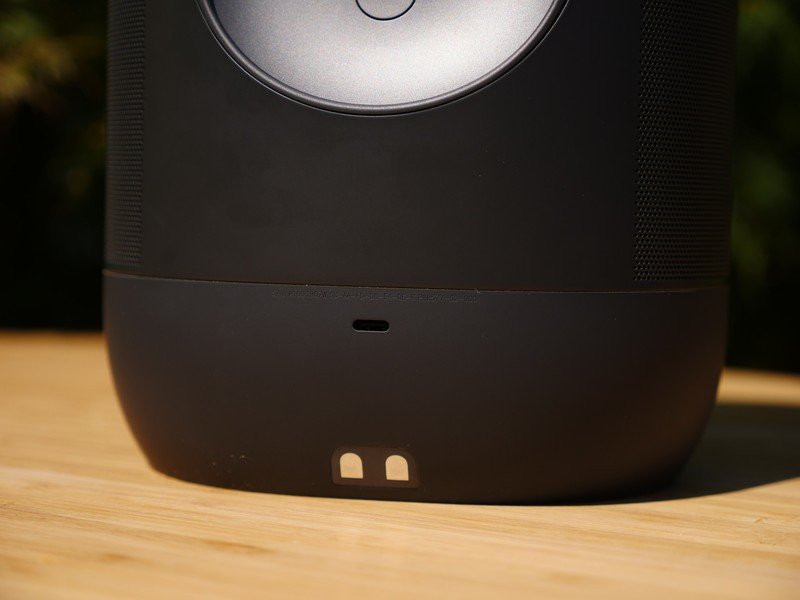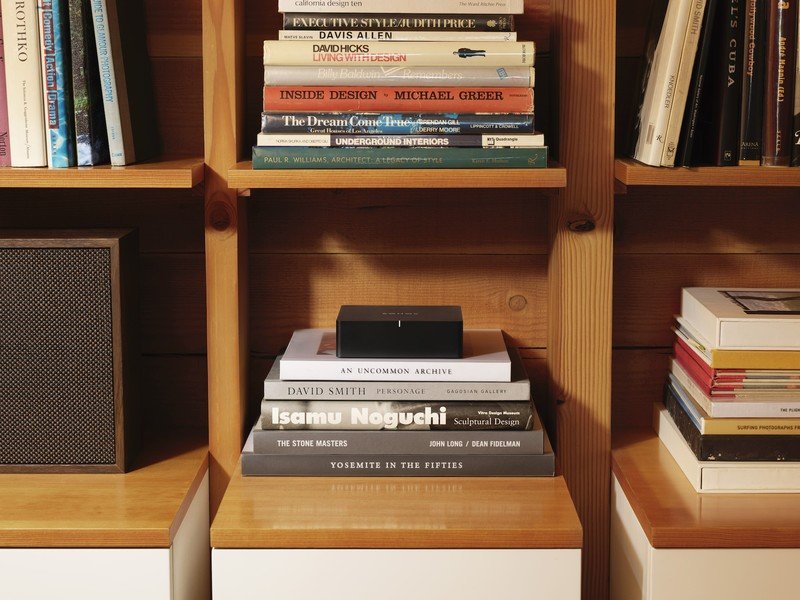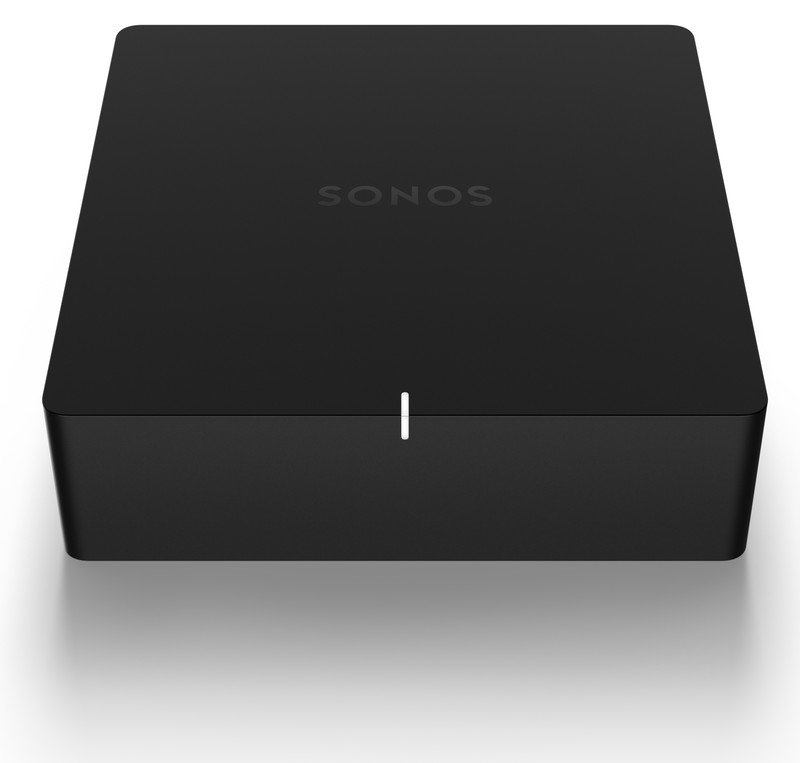The Sonos Move is the portable smart speaker of my dreams

What you need to know
- Sonos Move is powerful, portable, and unbreakable, goes on sale September 24 for $399.
- Sonos One SL replaces the Play:1, and goes on sale next week for $179.
- Sonos Port connects traditional stereo equipment to the Sonos ecosystem, coming early next year for $399.
My house is full of speakers. I play music from a Google Home Max, podcasts from a Lenovo Smart Display and, when sitting on my porch, audiobooks from a UE Boom 3.
But the vast majority of speakers peppered throughout my home, and the ones that get the most use, are from Sonos. My collection started with a single Play:1 and expanded to include a Play:5, a Beam, and most recently, Ikea's new Sonos-powered bookshelf and lamp speakers. I sometimes just group them all together when I want a whole-home dance party.
So when I learned that Sonos was coming out with its new Move speaker, I couldn't really contain my excitement. The speaker is beefier than the Sonos One and more versatile than the aging (but still incredible) Play:5. According to Max Bouvat-Merlin, VP of hardware for Sonos, the Move is the modern successor to the aging Play:3, which was unveiled way back in 2011.
Move supports both Wi-Fi and Bluetooth, pivoting between the two systems with a button on the back; when in Bluetooth mode, it works just like any other speaker, with a range of around 50 feet. In Wi-Fi mode, though, it gains what Sonos has always boasted about: over 100 music services, simple grouping with other Sonos speakers, and support for AirPlay 2, Google Assistant, and Amazon's Alexa assistants. There are four microphones at the top to make sure voice requests are heard even in an outdoor racket.

I had a chance to hear the Move indoors and out and came away very impressed; Sonos has always tuned its products for musicality but with an ear to preserving the original fidelity of the songs, and the Move has a considerably fuller sound than the Sonos One. That's thanks to two Class-D amplifiers, a dedicated tweeter, and a sizeable woofer that pulls double duty generating bass and mid-range sounds. At 6.6 pounds (about 3kg), the Move is one hefty portable speaker.
Of course, the Move would be nothing but an expensive and vulnerable dud if it wasn't fortified against the elements, and what Sonos did here is one of my favorite things about it. While stylish, with a traditional smoothed-over Sonos aesthetic, the company managed to protect all the innards against water and dust, giving it a hearty IP56 rating. That translates to being fully dust-protected and "protected against water sprayed from a 12.5 mm nozzle at 100 Liters/minute and 100 kPa (pressure) from three meters away for three minutes." In other words, you'll be able to leave the Move outside in a rainstorm and nothing will happen to it.

Sonos also made it clear that the Move can withstand abuse — a lot of abuse. In addition to being IP rated, it's fortified against drops and heat. Sonos encouraged me to drop the 6-pound speaker on the floor. On cement. Repeatedly. It was a little nervewracking, especially since I was doing it in front of the executive team. But that's a pretty brazen test to encourage press to do, especially for an unreleased product. Sonos said it spent years getting the design just right. The best part? There's a low-profile integrated handle, too, for easy carrying.
Be an expert in 5 minutes
Get the latest news from Android Central, your trusted companion in the world of Android
While the box comes with a dock for indoor use, the Move can go for 10 hours on battery, with easy recharging via USB-C if the dock isn't in reach. You'll need a 45-watt charger to top it up, though, which shows just how substantial the battery is. But the best part — and the thing I love Sonos for — is that when the battery inevitably degrades over time, which all lithium-ion cells do, it's easy to replace with a new cell by removing a single screw and under-plate.


The Move also introduces a new feature to the Sonos lineup: Automatic Trueplay. Previously, Sonos speakers required an iPhone — specifically an iPhone's microphones — to scan a room for ambient noise and echo to determine the right EQ settings for a speaker. Not only did that leave Android users out of the fun, but it required a manual step that only a few customers actually took. In recent years, products like Apple's HomePod and Google's Home Max speakers started using automatic tuning to determine the right equalization settings for a given environment, and with the Move, Sonos is introducing the same thing. It's not clear if Automatic Trueplay will roll out to other Sonos speakers with microphones (the One and Beam) in a software update.
None of this tech comes cheap, though. More expensive than all but the most elite of Bluetooth speakers, the Sonos Move will be available September 24 for $399/399 EUR/£399 worldwide.

Sonos Move
The Sonos Move could be one of the most exciting smart speakers ever made, featuring top-notch sound, a dual Wi-Fi/Bluetooth mode, and an IP56 water resistance rating.

As mentioned, while the Move is the big, um, mover of the bunch, there are two other announcements today. Sonos is also unveiling a new version of the Sonos One called the One SL, which drops the price from $200 to $180 and the number of microphones from four to zero.
The company said that there is still demand for an entry-level Sonos speaker without voice assistant support, and the Play:1 is approaching its sixth birthday so it makes sense to update the design for 2019 and beyond. Other than that, it's the same Sonos One that the company's been using to further its mainstream endeavors since 2017.
The Sonos One SL ships on September 12 for $179.

Sonos One SL
The Sonos One SL is a cheaper version of the popular Sonos One without the microphones that enable Google Assistant and Amazon Alexa support. If you're looking for a straight-up Wi-Fi connected smart speaker, this is a good starting option.

Finally, the company's overhauling its aging Connect product with the Port, a new product that adds Sonos connectivity to traditional speakers plugged into a receiver, or allows turntables and other line-in stereo equipment to communicate with an existing Sonos speaker system.
Unlike a product like the Move or Sonos One SL, Port is built for people who either haven't switched entirely to Sonos for their music-listening, or for whom a legacy stereo features somewhere in their setup. I gave up my living room receiver last year, replacing it with a Sonos Beam, but I haven't found a way to easily connect my turntable to my Sonos system. This solves that — for a sizeable investment of $399.
The Port starts shipping on September 12 in small quantities and will roll out more commercially starting next January.

Sonos Port
The Sonos Port is a Connect replacement, bridging older hi-fi equipment with a modern Sonos ecosystem. Port hooks up dumb speakers connected to a receiver with the wider Sonos ecosystem of 100+ music services, or connects a turntable to existing Sonos speakers through the line-in.
Daniel Bader was a former Android Central Editor-in-Chief and Executive Editor for iMore and Windows Central.

